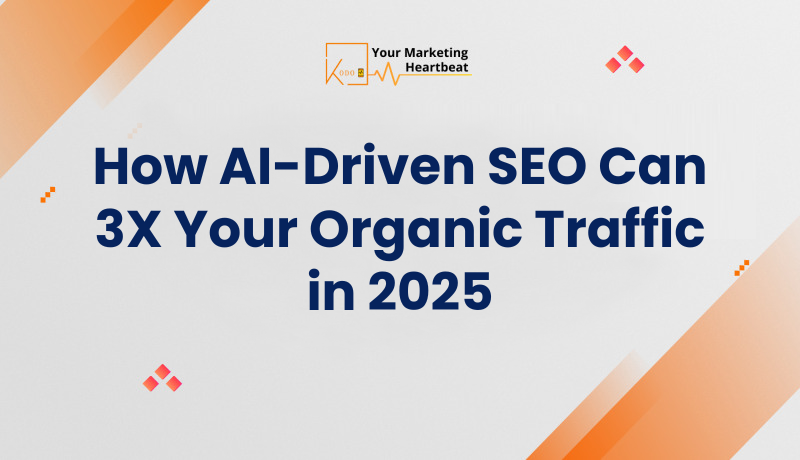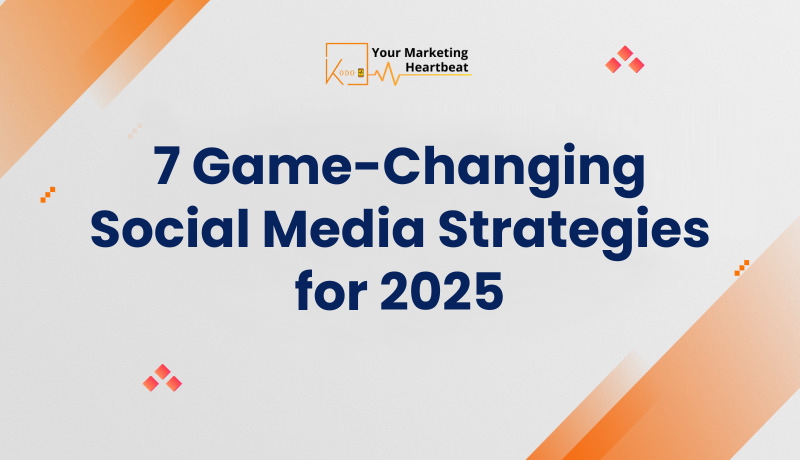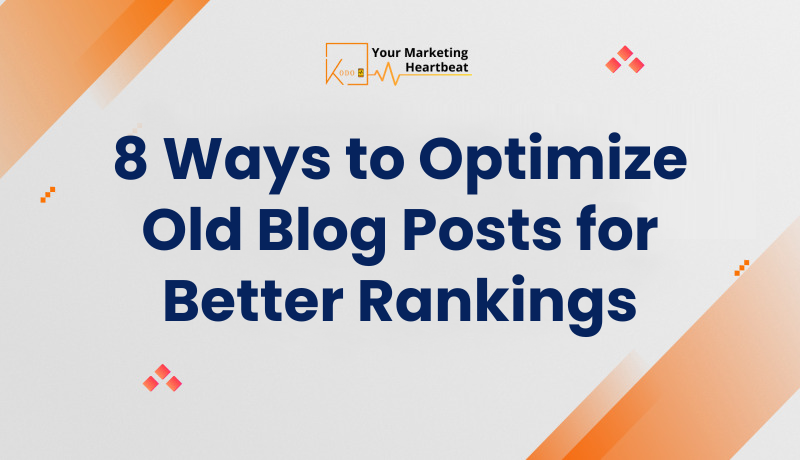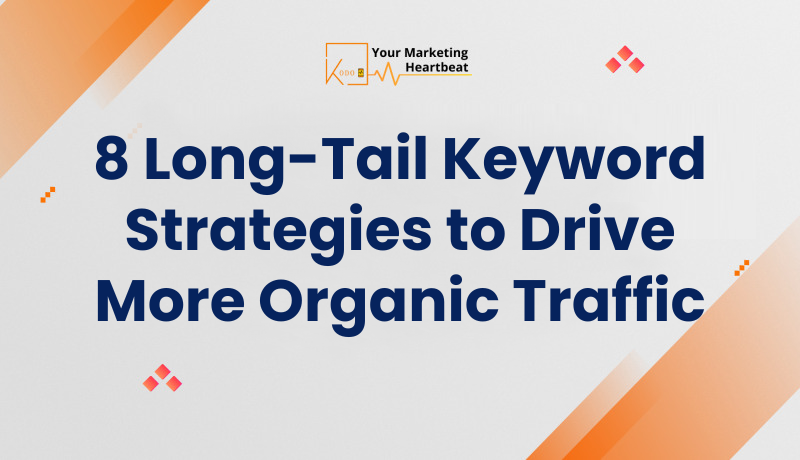
How AI-Driven SEO Can 3X Your Organic Traffic in 2025
As we approach 2025, the digital landscape is evolving at breakneck speed, with artificial intelligence (AI) taking center stage in reshaping search engine optimization (SEO) strategies. For businesses aiming to stay ahead of the curve, embracing AI-driven SEO is no longer optional—it’s imperative. In this comprehensive guide, we’ll explore how leveraging AI can potentially triple your organic traffic by 2025, providing you with actionable insights and strategies to revolutionize your online presence.

The digital marketing realm is witnessing a paradigm shift, with AI technologies becoming increasingly sophisticated and accessible. As search engines like Google continue to refine their algorithms, incorporating machine learning and natural language processing, the way we approach SEO must evolve in tandem. By harnessing the power of AI, businesses can not only keep pace with these changes but also gain a significant competitive edge in the digital marketplace.
In the following sections, we’ll delve into the transformative potential of AI-driven SEO, exploring how it can dramatically boost your organic traffic. From predictive keyword analysis to automated content optimization, we’ll uncover the cutting-edge techniques that are set to define the future of digital marketing. Whether you’re a seasoned SEO professional or a business owner looking to enhance your online visibility, this guide will equip you with the knowledge and tools needed to thrive in the AI-powered landscape of 2025.
Let’s embark on this exciting journey to unlock the full potential of AI-driven SEO and set your business on the path to unprecedented organic growth.
Understanding AI-Driven SEO
AI-driven SEO represents a revolutionary approach to optimizing websites for search engines. Unlike traditional SEO methods that rely heavily on manual analysis and implementation, AI-powered strategies leverage machine learning algorithms and big data to make more accurate, data-driven decisions. This shift allows for a more dynamic and responsive approach to SEO, capable of adapting to the ever-changing landscape of search engine algorithms and user behavior.
At its core, AI-driven SEO utilizes advanced technologies to analyze vast amounts of data, identify patterns, and make predictions about future trends. This enables marketers to stay ahead of the curve, anticipating changes in search algorithms and user preferences before they occur. By doing so, businesses can proactively adjust their strategies to maintain and improve their search rankings.
One of the key advantages of AI in SEO is its ability to process and interpret complex data sets at a scale and speed that would be impossible for human analysts. This includes analyzing millions of search queries, user interactions, and website metrics to uncover insights that might otherwise remain hidden. These insights can then be used to inform everything from keyword selection to content creation and technical optimization.
Moreover, AI-driven SEO tools can continuously learn and improve their performance over time. As they process more data and receive feedback on the effectiveness of their recommendations, these systems become increasingly accurate and valuable. This iterative learning process ensures that SEO strategies remain cutting-edge and effective in the face of evolving search engine algorithms.
The Role of Machine Learning in Keyword Research
Machine learning, a subset of AI, is revolutionizing the way we approach keyword research in SEO. Traditional keyword research methods often rely on manual analysis of search volumes, competition levels, and relevance. While these methods can be effective, they are time-consuming and may miss valuable opportunities. Machine learning algorithms, on the other hand, can analyze vast amounts of data to uncover hidden patterns and predict future trends in search behavior.
One of the key advantages of machine learning in keyword research is its ability to identify long-tail keywords and semantic relationships between search terms. These algorithms can analyze user search patterns, consider context, and understand the intent behind queries. This leads to the discovery of highly relevant, low-competition keywords that human analysts might overlook.
![]()
For example, a machine learning algorithm might identify that users searching for “best running shoes for flat feet” are also interested in “arch support insoles” and “pronation control.” This insight allows marketers to create more comprehensive content that addresses all related aspects of a topic, improving the chances of ranking for multiple related queries.
As we approach 2025, the integration of machine learning in keyword research tools is expected to become more sophisticated and accessible. These tools will likely offer more accurate predictions, deeper insights into user behavior, and more personalized recommendations based on a website’s specific niche and target audience.
To leverage machine learning for keyword research effectively:
- Invest in AI-powered keyword research tools that offer predictive analytics and intent analysis.
- Regularly update your keyword strategy based on machine learning insights to stay ahead of trends.
- Use machine learning-derived insights to inform your content strategy, ensuring you cover topics comprehensively.
- Experiment with targeting long-tail keywords and semantic variations identified by AI tools.
- Combine machine learning insights with human expertise to create a well-rounded keyword strategy.
By embracing machine learning in keyword research, businesses can uncover valuable opportunities, create more relevant content, and stay ahead of their competitors in the ever-evolving search landscape.
AI-Powered Content Optimization
Content optimization is a critical component of SEO, and AI is transforming this process in remarkable ways. As we move towards 2025, AI-powered content optimization tools are becoming increasingly sophisticated, offering capabilities that go far beyond traditional SEO practices. These tools can analyze existing content, provide real-time suggestions for improvement, and even assist in creating SEO-friendly content from scratch.
One of the key advantages of AI in content optimization is its ability to understand and mimic natural language patterns. Advanced natural language processing (NLP) algorithms can analyze top-ranking content for a given keyword and identify common themes, structures, and linguistic patterns that contribute to their success. This insight allows content creators to craft articles that are not only keyword-rich but also align with the style and depth that search engines favor.
AI tools can also provide real-time feedback on content quality and relevance. As you write, these tools can suggest improvements in areas such as:
- Keyword density and placement
- Readability and sentence structure
- Content depth and comprehensiveness
- Internal and external linking opportunities
- Semantic relevance to the target topic
For example, an AI-powered content optimization tool might suggest adding a section on “common running injuries” to an article about choosing running shoes, based on its analysis of top-ranking content in that niche.
Another significant application of AI in content optimization is in creating content briefs. These AI-generated briefs can provide writers with a comprehensive outline of what to include in an article to maximize its chances of ranking well. This might include:
- Primary and secondary keywords to target
- Suggested headings and subheadings
- Topics to cover and questions to answer
- Optimal word count range
- Recommended internal and external links
AI can also assist in optimizing existing content. By analyzing your current pages and comparing them to top-ranking competitors, AI tools can identify gaps in your content and suggest improvements. This might involve adding new sections, updating outdated information, or restructuring the content for better readability and SEO performance.
As we approach 2025, we can expect AI-powered content optimization tools to become even more advanced. Some potential developments include:
- More accurate prediction of content performance based on AI analysis
- Automated content creation for certain types of pages (e.g., product descriptions)
- Advanced personalization of content based on user data and behavior
- Real-time content adaptation based on search trends and user engagement metrics
To effectively leverage AI for content optimization:
- Invest in AI-powered content optimization tools that offer comprehensive analysis and suggestions.
- Use AI-generated content briefs as a starting point for your content creation process.
- Regularly audit and update existing content using AI insights to maintain relevance and rankings.
- Combine AI recommendations with human creativity and expertise for the best results.
- Stay updated on the latest AI developments in content optimization to remain competitive.
By embracing AI-powered content optimization, businesses can create more effective, relevant, and engaging content that resonates with both search engines and users. This approach can lead to improved rankings, increased organic traffic, and ultimately, better conversion rates.
Leveraging AI for Technical SEO
Technical SEO forms the foundation of a website’s search engine performance, and AI is revolutionizing how we approach this critical aspect of optimization. As we look towards 2025, AI-driven tools and techniques are set to transform technical SEO, making it more efficient, accurate, and effective than ever before.
One of the primary applications of AI in technical SEO is in website crawling and analysis. AI-powered crawlers can simulate search engine bots more accurately, providing deeper insights into how search engines view and interpret your site. These advanced crawlers can:
- Identify and prioritize technical issues based on their impact on SEO
- Predict potential future issues before they affect rankings
- Offer more accurate recommendations for fixing complex technical problems
For instance, an AI crawler might not only detect that your site has slow-loading pages but also analyze the specific elements causing the slowdown and suggest optimizations prioritized by their potential impact on page speed.
AI is also transforming how we approach structured data and schema markup. Advanced AI tools can:
- Automatically generate appropriate schema markup based on page content
- Identify opportunities for implementing new types of structured data
- Detect errors or inconsistencies in existing schema markup
This level of automation and intelligence in schema implementation can significantly enhance a website’s visibility in rich snippets and other enhanced search results.
Another area where AI is making significant strides is in log file analysis. AI-powered log analyzers can process vast amounts of server log data to uncover valuable insights, such as:
- Identifying crawl budget inefficiencies
- Detecting patterns in how search engines crawl your site
- Uncovering hidden technical issues that may be impacting indexation
These insights allow SEO professionals to make data-driven decisions about technical optimizations that can have a substantial impact on search performance.
AI is also revolutionizing mobile SEO. With the increasing importance of mobile-first indexing, AI tools can:
- Simulate various mobile devices and network conditions to test site performance
- Automatically detect and suggest fixes for mobile-specific issues
- Provide predictive analysis of how technical changes might impact mobile rankings
As we approach 2025, we can expect AI to play an even more significant role in technical SEO. Some potential developments include:
- AI-driven predictive maintenance for websites, identifying and fixing issues before they impact rankings
- More sophisticated analysis of Core Web Vitals and other performance metrics
- Automated implementation of technical SEO best practices
- Advanced anomaly detection to quickly identify and address sudden changes in technical performance
By embracing AI in technical SEO, businesses can ensure their websites are optimized at a level of precision and efficiency that was previously unattainable. This can lead to improved crawlability, better indexation, and ultimately, higher rankings and increased organic traffic.
Predictive Analytics for SEO Strategy
Predictive analytics, powered by AI and machine learning, is set to revolutionize SEO strategy as we approach 2025. This advanced approach uses historical data, current trends, and complex algorithms to forecast future outcomes, allowing businesses to make proactive decisions about their SEO efforts.
One of the key applications of predictive analytics in SEO is in forecasting search trends. By analyzing historical search data, seasonal patterns, and current events, AI can predict which topics and keywords are likely to gain popularity in the coming months or years. This foresight allows businesses to:
- Create content ahead of trend spikes to capture early traffic
- Adjust their keyword targeting strategies proactively
- Allocate resources more effectively based on predicted opportunities
For example, a predictive analytics tool might forecast a surge in searches related to “sustainable fashion” in the next quarter, allowing a clothing retailer to prepare relevant content and product pages in advance.

Another powerful application of predictive analytics is in competitor analysis. AI-powered tools can analyze competitors’ SEO strategies, predict their likely next moves, and identify potential opportunities or threats. This might include:
- Predicting which keywords competitors are likely to target next
- Forecasting changes in competitors’ content strategies
- Identifying gaps in the market that competitors are likely to overlook
This level of insight allows businesses to stay one step ahead, either by countering competitors’ moves or by capitalizing on overlooked opportunities.
Predictive analytics can also be used to optimize internal linking structures. By analyzing user behavior patterns and content relationships, AI can predict which internal links are most likely to improve user engagement and search rankings. This can lead to more effective site architecture and improved overall SEO performance.
As we move towards 2025, predictive analytics in SEO is expected to become even more sophisticated. Some potential developments include:
- More accurate prediction of algorithm updates and their potential impacts
- AI-driven content calendars that suggest optimal timing for publishing different types of content
- Predictive ROI models for SEO efforts, allowing for more precise budget allocation
- Advanced user intent prediction, allowing for hyper-personalized content strategies
To effectively leverage predictive analytics in your SEO strategy:
- Invest in AI-powered SEO tools that offer predictive analytics capabilities.
- Use predictive insights to inform your content strategy and resource allocation.
- Regularly review and adjust your SEO strategy based on predictive forecasts.
- Combine predictive analytics with real-time data monitoring for a comprehensive approach.
- Train your team to interpret and act on predictive insights effectively.
By embracing predictive analytics, businesses can move from a reactive to a proactive SEO strategy. This forward-thinking approach can lead to more efficient resource allocation, better timing of SEO efforts, and ultimately, a significant boost in organic traffic.
Automated Reporting and Insights
As we approach 2025, automated reporting and insights powered by AI are set to transform how businesses analyze and act on their SEO data. These advanced systems go beyond simple data aggregation, offering deep insights, trend identification, and actionable recommendations without the need for extensive manual analysis.
One of the key advantages of AI-driven automated reporting is its ability to process and analyze vast amounts of data from multiple sources in real-time. This includes:
- Search console data
- Analytics data
- Backlink profiles
- Competitor performance
- Social media metrics
By correlating data from these diverse sources, AI can provide a holistic view of your SEO performance and identify complex patterns that might be missed by human analysts.
AI-powered reporting tools can also offer predictive insights, forecasting future performance based on current trends and historical data. For example, these tools might predict:
- Expected traffic levels for the coming months
- Potential ranking changes for key keywords
- Likely impact of recent SEO efforts on future performance
These predictions allow businesses to make data-driven decisions about their SEO strategies and allocate resources more effectively.
Another significant advantage of automated reporting is the ability to generate natural language insights. Instead of presenting raw data, these systems can provide written explanations of key trends, anomalies, and opportunities. This makes SEO insights more accessible to team members who may not have extensive technical knowledge.
As we move towards 2025, we can expect automated reporting and insights to become even more sophisticated. Some potential developments include:
- More accurate attribution modeling, providing clearer insights into which SEO efforts are driving results
- Advanced anomaly detection, quickly identifying and explaining unexpected changes in performance
- Personalized insights tailored to specific roles within an organization (e.g., different reports for SEO specialists vs. executives)
- Integration with other marketing tools for a more comprehensive view of overall digital performance
To effectively leverage automated reporting and insights:
- Invest in AI-powered SEO tools that offer comprehensive automated reporting features.
- Set up custom dashboards and reports tailored to your specific KPIs and business goals.
- Use automated insights to guide your SEO strategy and decision-making processes.
- Regularly review and act on the recommendations provided by your automated reporting tools.
- Train your team to interpret and leverage AI-generated insights effectively.
By embracing automated reporting and insights, businesses can save time on manual data analysis, gain deeper insights into their SEO performance, and make more informed, data-driven decisions. This can lead to more efficient SEO strategies, better resource allocation, and ultimately, improved organic traffic and conversions.
Conclusion
As we step into the future of digital marketing, AI-driven SEO is no longer just an option—it’s a necessity. With the power of machine learning, natural language processing (NLP), and predictive analytics, AI is transforming the way we understand search intent, optimize content, and stay ahead of algorithm updates.
By automating repetitive tasks, delivering smarter insights, and predicting trends before they happen, AI empowers businesses to create more meaningful, personalized, and search-friendly experiences for their audiences.
However, while AI is a game-changer, it’s important to remember that human creativity, strategy, and ethical practices are still at the heart of successful SEO. The key is to strike the right balance between automation and authenticity.







